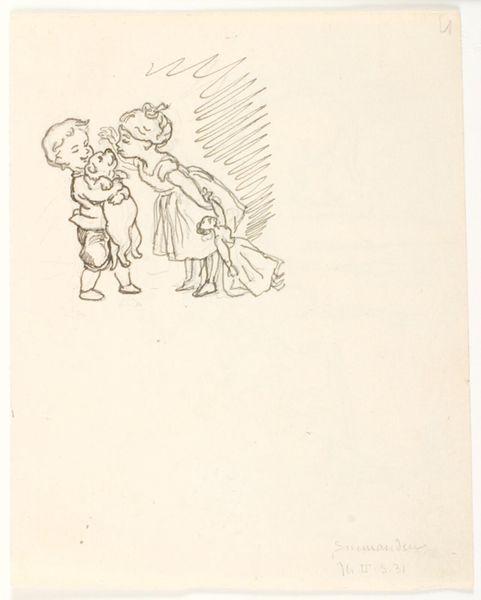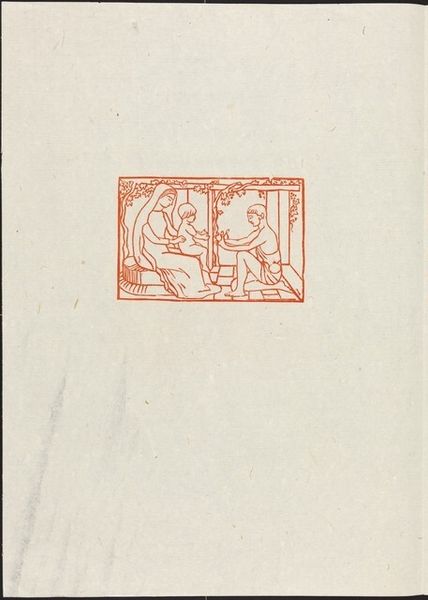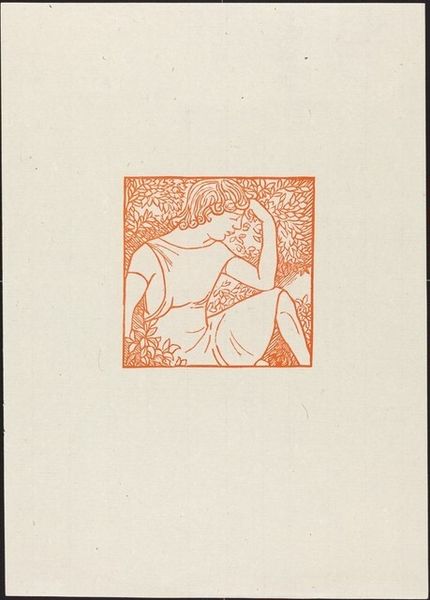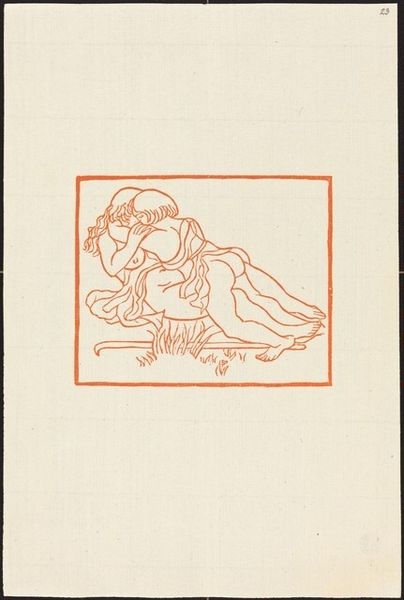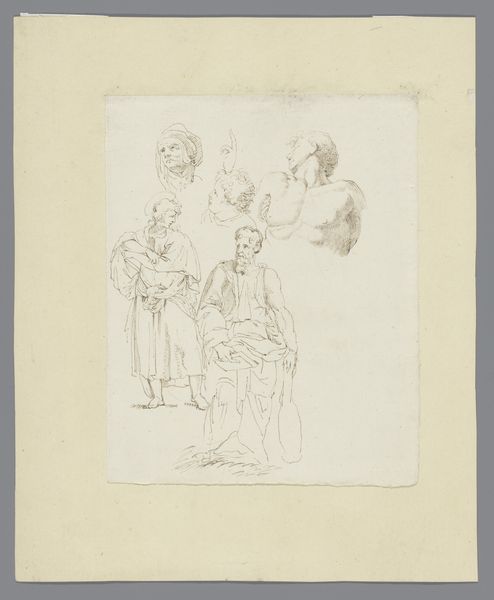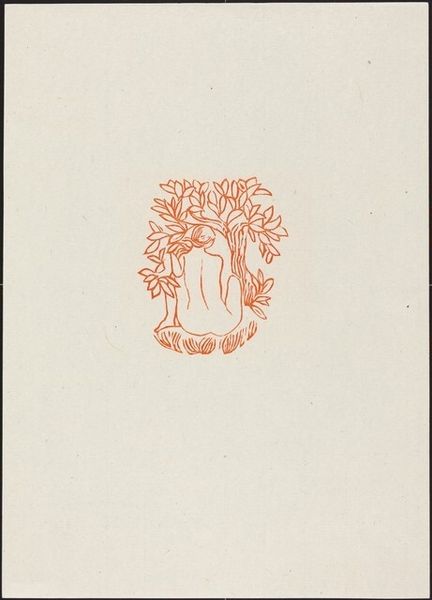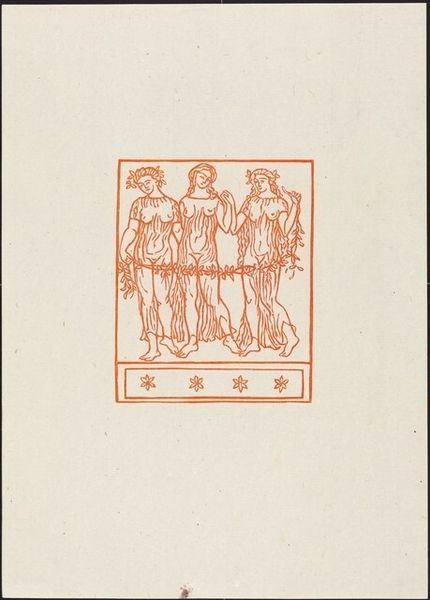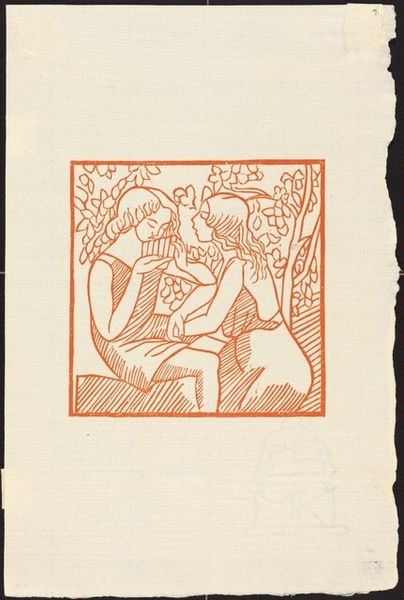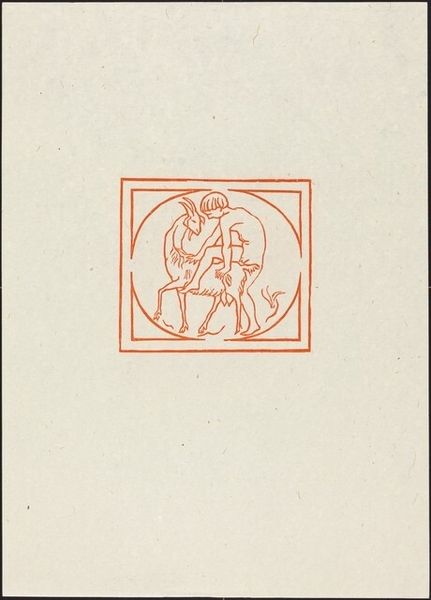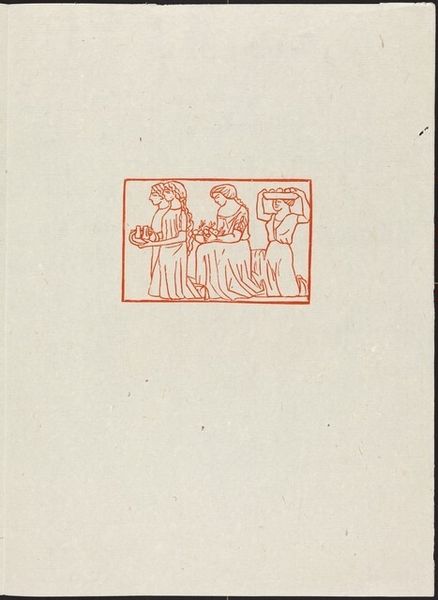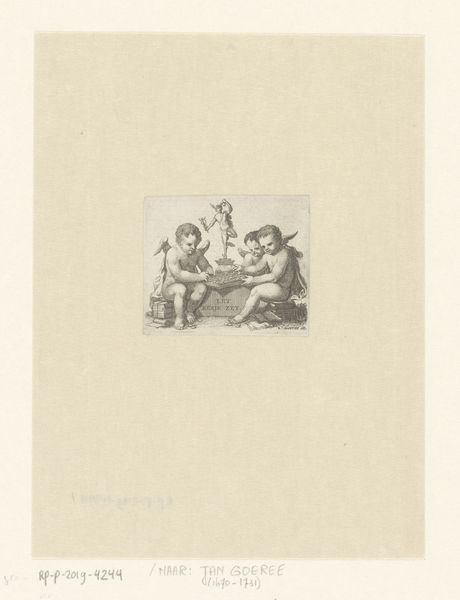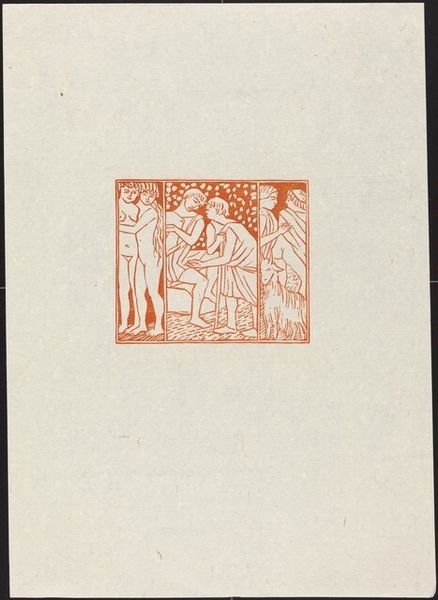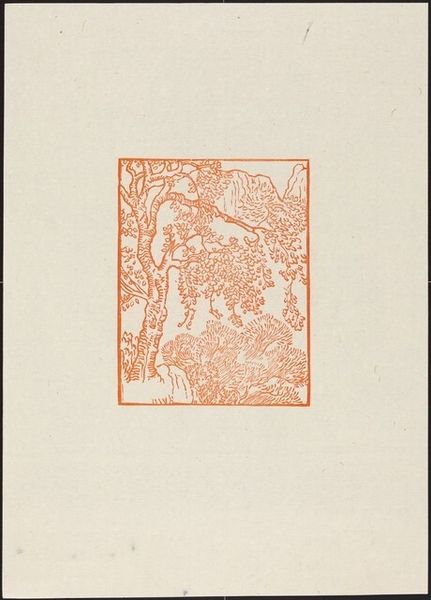
Second Eclogue: The Nymphs Bring Lilies in Baskets Full (Les nymphs porteuses de fleurs) Possibly 1926
0:00
0:00
Copyright: National Gallery of Art: CC0 1.0
Curator: Aristide Maillol may have created this engraving titled, "Second Eclogue: The Nymphs Bring Lilies in Baskets Full", around 1926. What strikes you foremost? Editor: Well, formally, it’s the sparseness. The barest lines define the figures, their drapery, and the woven baskets. The stark composition and minimal colour seem almost primitive, but in a deliberate way. Curator: Yes, the use of line is remarkable in its restraint. Maillol evokes a sense of classical simplicity, almost archaic. Nymphs, beings that inhabit springs, groves, and other natural sites, carry baskets, suggesting gifts, abundance, and, perhaps, blessings of nature. The lilies would then become associated with purity and peace. Editor: Do you see it as pure though? Look at how he treats their bodies. One is topless; both figures feature pronounced lines suggesting pubic areas—it feels frank, quite unlike idealised nudes. Curator: I would counter that it highlights the nymphs’ direct connection to nature. In folklore, they aren’t solely innocent spirits, but powerful guardians, associated with fertility and earthly power. These seemingly simple lines point to deeper symbolic realms and reveal an earthy celebration of natural life and cycles. Editor: It also gives the piece a sense of ambiguity that makes the viewer work for understanding. Are they benevolent beings offering gifts or something else entirely? The simplified shapes could indicate both worlds—simultaneously divine and human. Curator: Perhaps that is precisely the power of Maillol’s approach. By stripping away the ornate detail, he delivers the archetypal figures of nature divinities to our gaze, unclothed by excess sentimentality or elaborate narrative. What do you take away? Editor: Ultimately, the interplay between sparse execution and the rich symbolic density renders this print intriguing. It pushes a simple image past aesthetics toward ideas around cultural memory and the physical body.
Comments
No comments
Be the first to comment and join the conversation on the ultimate creative platform.

